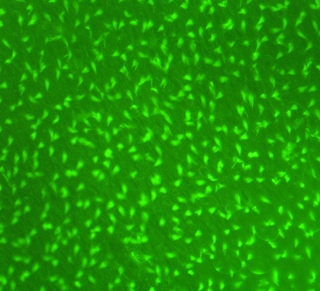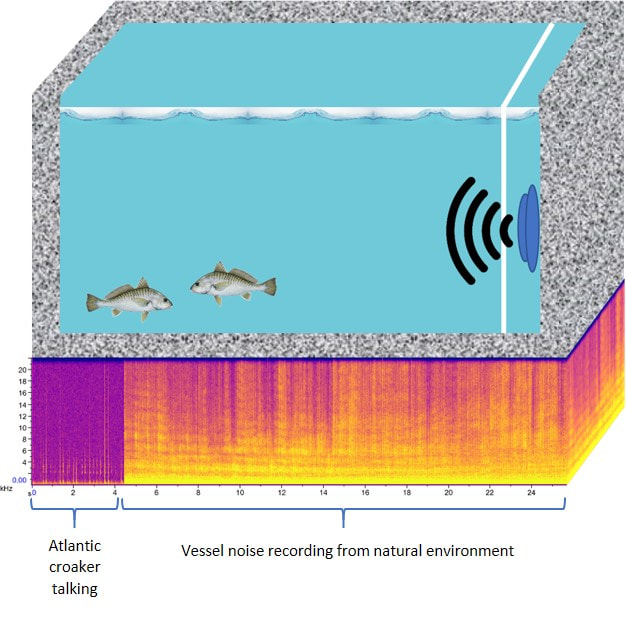Gina Badlowski - M.S. Thesis Topic
Noise pollution from vessel traffic is rapidly increasing in marine environments worldwide, yet the impacts for most organisms are unknown and minimally studied. Most aquatic and marine noise pollution studies focus on military sonar, seismic air gun blasts, and pile driving which are known to impact charismatic megafauna such as marine mammals. However, vessel noise is more pervasive than other sources and is mainly studied on model organisms that may not be exposed to this noise in the wild. The purpose of the proposed study is to look at the impacts of vessel noise on the damage of ear hair cell density in an ecologically important and non-model species, the Atlantic croaker Micropogonias undulatus (family Sciaenidae). This species utilizes vocalization for communication that may be essential for reproduction. Increasing vessel noise may affect the hearing capabilities of this species and hinder the ability to hear conspecific calls due to damage of sensory hair cells in the ear, leading to greater behavioral effects on an individual and can potentially have a cascading effect on the population and ecosystem.
The goal of this study is to determine the impacts of vessel noise exposure on hearing sensitivity and sensory hair cells in the ears of croaker.
To do this, I am using simulated vessel noise in a laboratory setting to test the impacts of noise on hearing and the sensory epithelium of Atlantic croaker.
Noise pollution from vessel traffic is rapidly increasing in marine environments worldwide, yet the impacts for most organisms are unknown and minimally studied. Most aquatic and marine noise pollution studies focus on military sonar, seismic air gun blasts, and pile driving which are known to impact charismatic megafauna such as marine mammals. However, vessel noise is more pervasive than other sources and is mainly studied on model organisms that may not be exposed to this noise in the wild. The purpose of the proposed study is to look at the impacts of vessel noise on the damage of ear hair cell density in an ecologically important and non-model species, the Atlantic croaker Micropogonias undulatus (family Sciaenidae). This species utilizes vocalization for communication that may be essential for reproduction. Increasing vessel noise may affect the hearing capabilities of this species and hinder the ability to hear conspecific calls due to damage of sensory hair cells in the ear, leading to greater behavioral effects on an individual and can potentially have a cascading effect on the population and ecosystem.
The goal of this study is to determine the impacts of vessel noise exposure on hearing sensitivity and sensory hair cells in the ears of croaker.
To do this, I am using simulated vessel noise in a laboratory setting to test the impacts of noise on hearing and the sensory epithelium of Atlantic croaker.

Hair cells from the saccule of Atlantic croaker stained with fluorescent phalloidin green.
